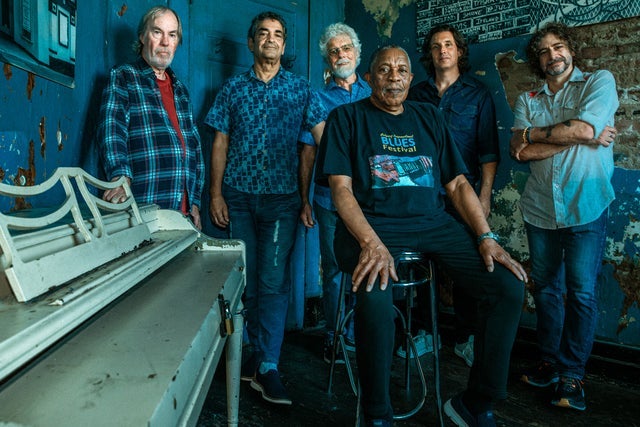Funk roads and desert skies
Little-Feat came out of Los Angeles in 1969, blending country-blues, New Orleans funk, and sly jazz turns under founder
Lowell-George. Today, the group is steered by keyboard anchor
Bill-Payne with long-timers
Sam-Clayton,
Kenny-Gradney, and
Fred-Tackett, alongside newer hands
Scott-Sharrard and
Tony-Leone. This farewell run frames them as craftsmen closing a long chapter rather than chasing nostalgia. Expect a song stack built around
Dixie Chicken,
Fat Man in the Bathtub,
Willin', and
Spanish Moon, stretched with pocket grooves and sing-along breaks. Crowds skew multi-generational, with veteran fans nodding to deep cuts while younger listeners lock into the swampy rhythm and clap on the backbeat. A neat nugget:
Waiting for Columbus was cut across shows in D.C. and London, and
Fred-Tackett sometimes adds trumpet to the
Dixie Chicken jam. Another small detail is that
Oh Atlanta was written by
Bill-Payne, and the band will sometimes slip a second-line shuffle under its outro. Please note, the set choices and production notes below are educated guesses based on recent runs and could shift from night to night.
The long goodbye, on their terms
The Circle Around the Stage
Roots-rock wardrobe cues
The scene feels like a roots-rock block party, with worn denim, vintage album tees, and boots next to sneakers. You will see handmade pins quoting
Feats Don't Fail Me Now and posters nodding to the hammock tomato from
Waiting for Columbus. During
Willin', the crowd often takes the famous line about weed, whites, and wine while the band lets the guitars hang back. Call-and-response on
Feats Don't Fail Me Now tends to kick up early dancers, and a few folks carry tiny cowbells for the break. Merch leans into Southern-fried humor and travel lore, but the longest lines are usually for show posters and vinyl reissues. Conversations before the set are less about viral moments and more about which era you first saw
Little-Feat, or memories of
Lowell-George and
Paul-Barrere shaping the sound. You will notice a gentle, respectful energy, like friends gathering to toast the players rather than chase spectacle. By the encore, there is a quiet pride in the room, the kind you feel when a band with a lived-in groove takes a proper bow.
Traditions that feel earned
Pocket First, Then Fireworks
Groove first, flash second
Vocally,
Scott-Sharrard handles many leads with a warm, slightly sandy tone, while
Bill-Payne and
Sam-Clayton layer crisp harmonies that cut through without shouting. Arrangements lean on piano-forward grooves, with
Fred-Tackett playing tight rhythm figures before slipping into lyrical fills, and
Kenny-Gradney keeping the lines simple but deep. Tempos breathe rather than lock to a grid, so songs can open up for call-and-response between keys, guitar, and congas. One reliable live twist is stretching
Dixie Chicken into a mid-set medley, sometimes dropping in a brief solo trumpet spot from
Fred-Tackett before pivoting back to a piano vamp. On
Spanish Moon, the band favors a moody minor-key stomp, and the congas by
Sam-Clayton add a dark rattle that makes the bassline feel heavier. A quieter trick is how
Tony-Leone uses light cymbal patterns to signal section changes, letting jams tighten without hard stops. The lighting tends to warm ambers and deep reds, serving the swamp-funk mood rather than chasing big strobe moments. If you listen close,
Bill-Payne will sneak left-hand piano lines that mirror the bass, making the pocket feel thicker without getting louder.
Subtle tricks, big payoffs
Kindred Travelers, Shared Groove Maps
Neighboring sounds, kindred crowds
Fans of
Steely-Dan will vibe with the sleek keys, sly rhythms, and the way
Little-Feat treats groove as the story.
The-Doobie-Brothers share that West Coast roots-rock polish with harmony hooks built for big rooms. If you chase soulful guitar interplay and road-tight dynamics,
Tedeschi-Trucks-Band hits similar nerves. Jam-friendly ears who like low-end thump and long-form funk will find kinship with
Gov't-Mule, especially on slow-burners. Blues and Americana fans who follow
Bonnie-Raitt for song-first shows often show up for the storytelling side too.
Why those parallels matter



